Beware These Hidden Money-Pit Problems When You Buy a Home

Are you looking to buy a house? Maybe your very first home? Getting a fixer-upper can be a great way to save money -- but be sure you understand the hidden, potential problems that can quickly turn your home purchase from a good investment into an endless money drain.
Here are 20 hidden expenses that might be lurking in any home on the market.
1. Termites
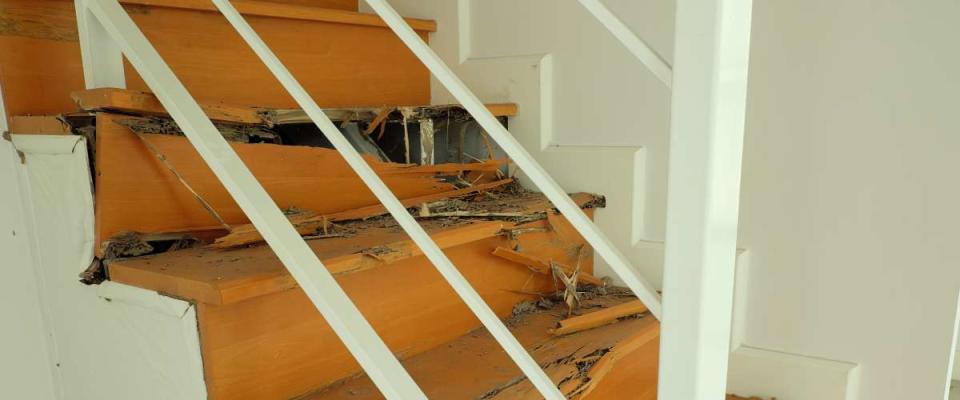
Tiny bugs can make their nests inside of the walls of a home, and if left unchecked, they can literally chew holes through wood.
These tiny bugs can make their nests inside the walls of a home, and if left unchecked they can chew holes through the wood holding up your house.
The cost of repairs depends on how far the critters travel and if the previous owner ever bothered to call an exterminator. A small area of damage can cost $2,000 to fix, but major structural damage can cost up to $20,000.
When you're touring a house, check for signs of infestation, and don't be afraid to invest in an annual termite inspection for any home you own. The cost is $75 to $100, which is a relatively small price to pay for getting ahead of much more serious damage.
2. Septic system
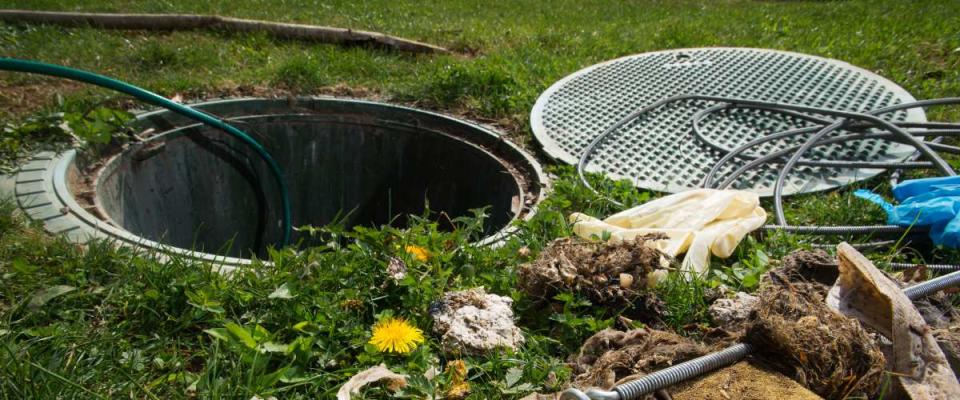
If you're looking to buy a home in a rural area, it becomes the responsibility of the homeowner to buy and maintain their septic system.
In cities, your home will be connected to a sewer system maintained by your municipality and paid for though your taxes. However, if you're looking to buy a home in a rural area, it becomes the responsibility of the homeowner to buy and maintain a septic system.
And, you may one day be surprised with a notice from the Environmental Protection Agency that you are required to update your septic system in order to comply with environmental standards, even if the plumbing works just fine.
For a house with three bedrooms, it costs anywhere from $1,000 to $4,000 to install a new septic system.
EPA requirements vary by the municipality, and the laws governing one house may be different from another located just one block away. If you're buying in a rural area, be sure to do your research on the rules and the home's current type of septic system.
3. HVAC issues

Many older homes don't have modern HVAC installed.
HVAC stands for "heating, ventilation and air conditioning." Obviously, you need a working HVAC system to stay warm in the winter and cool in the summer.
Some unwitting homebuyers wind up with a bad system requiring thousands of dollars in repairs — if they're not forced to install an entirely new system.
Many older homes don't have modern HVAC installed because they relied on oil-fuled boilers and window air conditioning units. For a 1,000 square-foot home, a new HVAC system will cost anywhere from $6,000 to $12,000.
Before buying a home, check how old the heating and cooling system is and inquire if there's a warranty. Be sure to pay for an inspection on the house before you close, and ask the inspector for an opinion on the shape of the system.
4. Trees that need removing

When you're walking around your new property, keep an eye out for dead trees.
When you're walking around a property, look around for dead trees. They can cause major problems, especially if there are branches that might fall on your roof.
Even live trees can cause problems. If a tall tree were hit by lightning, could it fall on someone's house? You'd be open to a lawsuit potentially costing tens of thousands of dollars, and it may not be covered by your homeowner's insurance.
Hiring a professional to remove a tree costs anywhere from $150 all the way up to $1,500 for just one tree. Removal companies also charge extra for pulling out and grinding up the stump, and for cleaning up.
You can save a little bit of money if you're willing to do your own cleanup afterwards, but if you don't have a wood-burning stove or a fireplace, you are going to get stuck with a lot of wood you won't know what to do with.
5. Mold

When you're walking around the house with a realtor, take a deep sniff.
When you're walking around a house with a Realtor, take a deep sniff. Go into the basement and attic, and take in a deep breath as well.
Does it smell musty? If so, it may mean the house had a leak or some kind of water damage that caused mold to grow inside of the walls, where you can't see it. Living in a house with mold can cause serious health problems, specifically asthma and allergies.
Sometimes, mold is isolated to a small area (like a leaky pipe underneath the sink), and it's easy enough to clean it with bleach or replace one cabinet for a couple hundred dollars.
However, if the mold is so bad that it is inside the walls throughout the house, removing it all can cost up to $30,000.
6. Foundation trouble
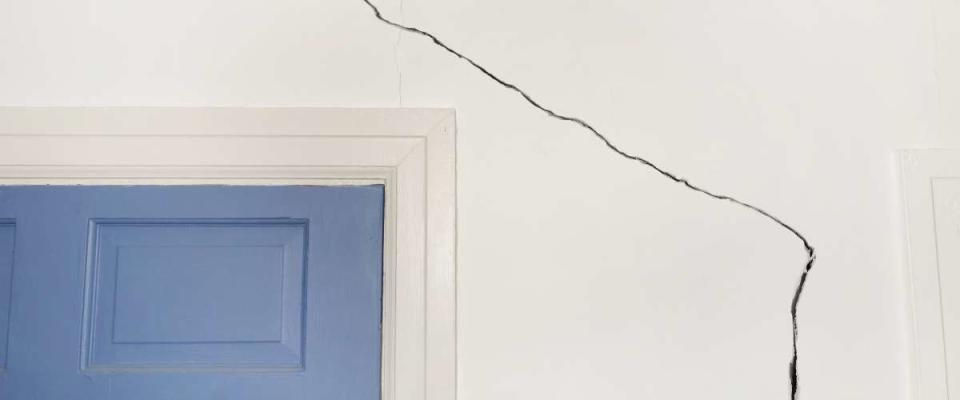
There are several different types of foundation problems.
There are several different types of foundation problems. Some of these issues are easy to fix for $500 to $2,000, but others become more complicated and can cost upwards of $11,000.
You can check for issues on your own by looking for doors that don't close properly, cracked drywall, cracks in the basement walls, floors that seem to slope, or gaps between the walls and ceilings.
On the bright side, these sorts of things might help you negotiate the price of a home down, and you could get lucky and pay less for the foundation repairs than the discount you get on the sale.
However, it's best to bring in an inspector to give a professional opinion.
7. Water damage
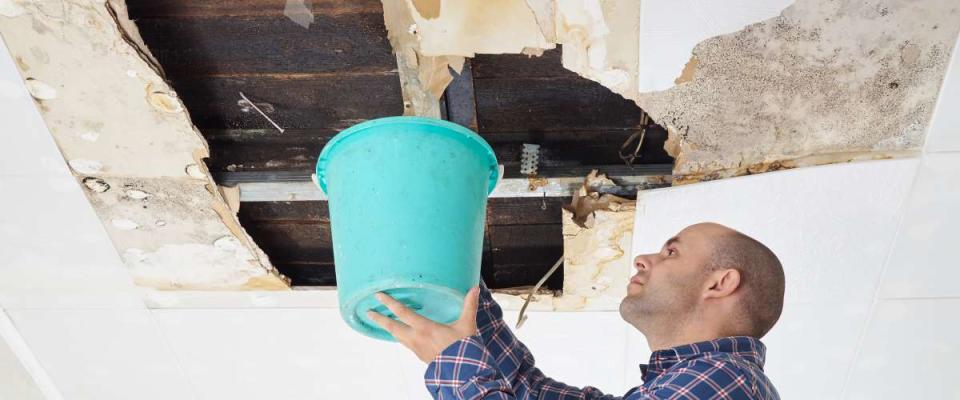
Water damage doesn't just cause mold. It can also pour onto electrical wiring, rot the floors, and make huge holes in your ceiling.
Water damage can cause mold, damage the electrical wiring, rot the floors and make huge holes in your ceiling, if the leak is coming from the roof. Look for water damage spots on the ceilings of each and every room.
Check if rooms smell musty, and look for water damage on the floors as well. Sometimes the damage has been repaired, but other times, patching something up does not necessarily mean the problem was solved.
The cost of fixing the damage will vary dramatically depending on how handy you are at fixing things yourself, and the extent of the damage.
If it was caused by a flood from a hurricane, you might need to replace the insulation, floorboards and structural beams — which could cost $2,000 or more. Water damage can really make you pay big if pipes and wiring need replacing.
8. Bad wiring
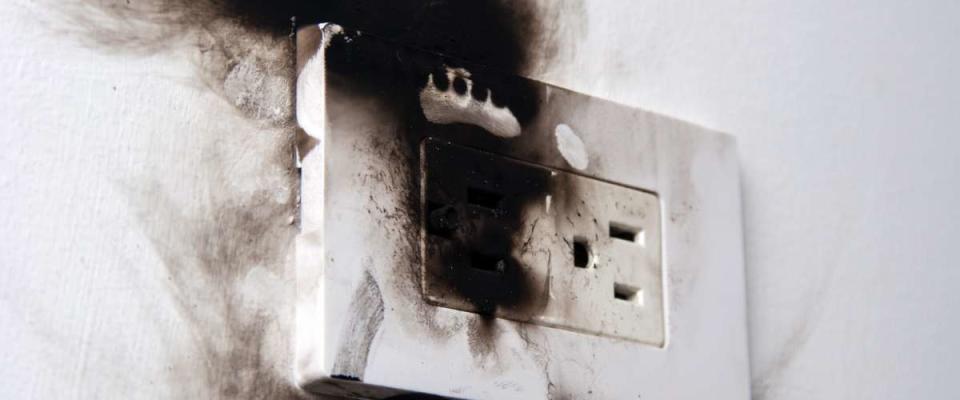
A lot can go wrong with a house's electrical wiring.
A lot can go wrong with a house's electrical wiring. If you buy an older historic home from the 1930s or earlier, it could still have knob-and-tube wiring, which has the potential to burst into flames.
Sometimes, wires are not grounded properly, which can cause electrocution.
A lot of people DIY with wiring, and you could find an absolute mess left from the previous owner. Other times, the wiring is simply old and needs to be replaced.
An electrician can fix smaller problems for under $1,000, but if you're buying a historic fixer-upper, rewiring an entire house can cost $8,000 to $15,000. You might find yourself needing to take out a home equity loan or line of credit.
9. Asbestos

If you're buying a house that was built before the 1970's, there is a chance that the roof, siding, and floor tiles could contain a highly dangerous material called asbestos.
If you're buying a house that was built before the 1970s, there is a chance the roof, siding and floor tiles could contain a highly dangerous material called asbestos. You do not want to mess with this stuff!
It's relatively harmless when dormant, but once any material containing asbestos is disturbed, microscopic fibers will break away and float through the air. If you breathe in just one fiber, it can stick to your lungs and put you at risk of a kind of cancer called mesothelioma.
Having an inspector identify if your house contains asbestos can cost $400 to $800, says HouseLogic. If there's a lot of the nasty stuff, removing it can cost $20,000 to $30,000.
That doesn't even include the cost of replacing those materials. Asbestos can be in the exterior siding, roofing, flooring and even the walls.
10. Roof

Having a good roof is extremely important to prevent water damage and insulate your house properly.
Having a good roof is extremely important to preventing water damage and insulating your house properly.
You can hire a roofing inspector, but you can check for clogged drain pipes, missing shingles, or any visible sagging on your own. Also, ask the previous owner or Realtor how old the roof is, because the typical lifespan is about 30 years.
If the roof is due to be replaced, that can cost $10,000 to $30,000. But the price can be much higher depending on the square footage of the roof and the quality of tiles you buy.
You could even get a fancy Tesla Solar Roof, which is supposed to be “cheaper” than a traditional roof — but that's only after tax incentives and the savings in electrical costs are applied down the road.
11. Pet damage

Have you ever wondered why some landlords do not allow pets?
Animals can do some serious damage to a property amounting to thousands of dollars in repairs, and homeowners insurance usually won’t cover it.
If previous pets urinated on the floors on a regular basis, new flooring and padding will cost roughly $500 to $1,000 per room.
However, in extreme cases, the urine will seep down to the subfloor, and the smell becomes part of the wood. There is no way to remove it unless the entire subfloor is replaced — at a cost of $4,000 to $6,000 per room, including the contractor and materials.
If you go on a house tour and get a whiff of dog or cat pee, you should probably run in the opposite direction.
12. A porch that needs repairing
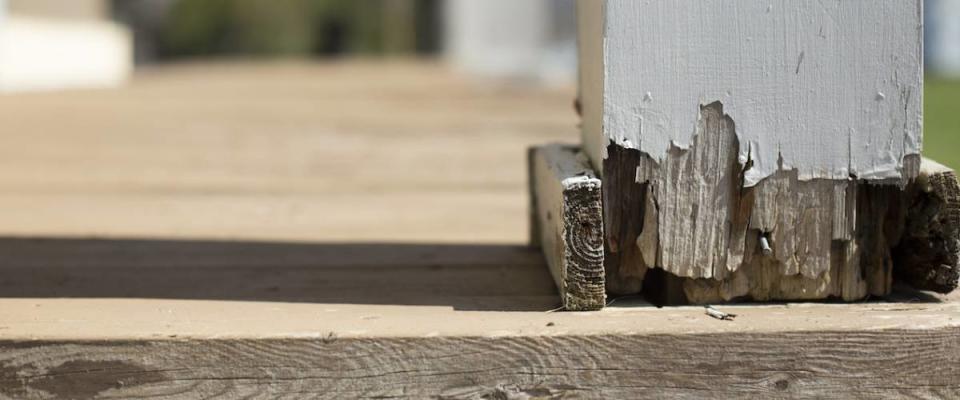
Dry rot and water damage can cause a porch to fall apart.
Having a front or back porch adds value to your property, because it gives everyone an outdoor living space. However, dry rot and water damage can cause a porch to fall apart.
Sometimes, it’s possible to fix small patches of rotting wood for less than $100, but if the previous homeowner didn't keep up with maintenance, issues with a porch can be compounded over the years.
Fixing these problems is very important, especially if people are using the porch to walk in and out of your home. The last thing you would want is for someone to step through rotting wood and end up in the hospital with a broken ankle.
The national average for deck repair is $1,610, and the cost of an entire new deck can be as high as $25,600, says HomeAdvisor.
13. Flood elevation needs
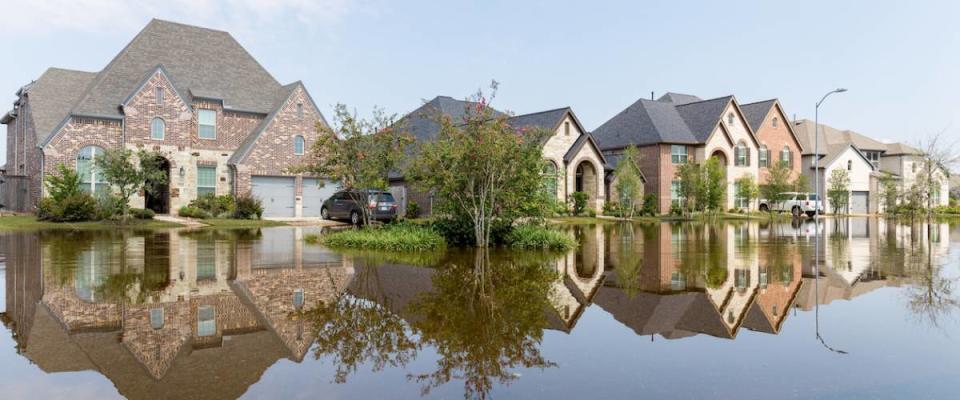
Houses in Houston suburb flooded from Hurricane Harvey 2017.
Buying a house near a river, lake, bays or ocean can be beautiful, and waterfront property is very valuable. However, major storms can destroy homes on coastlines and inland river floodplains.
Due to the growing number of destructive storms, states have passed laws mandating that houses near water be elevated.
Raising a foundation can cost up to $14,000, though the required height and the cost of the project depend on the location.
Keep in mind that if you buy a property that was already damaged in a flood, the home may not survive being lifted off its foundation. That would force you to tear down the existing house, and build a new, elevated one.
14. Plumbing problems
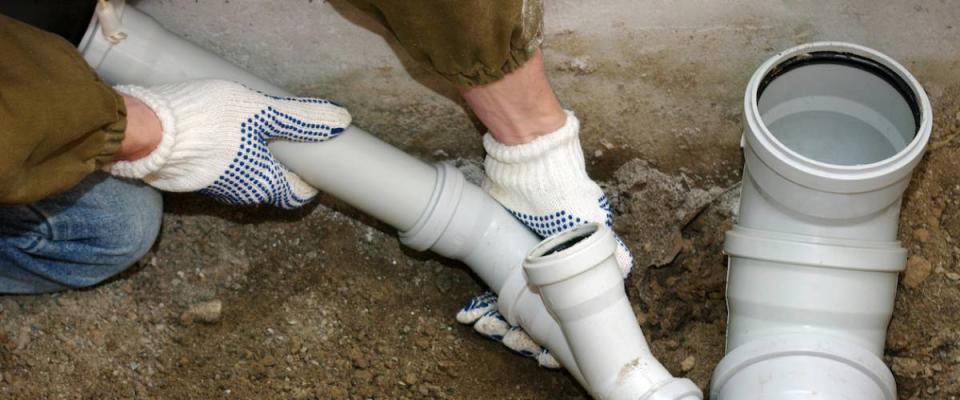
There are so many different things that can go wrong with plumbing.
From broken pipes in your walls to tree roots growing in the sewers outside of your home, there are so many different things that can go wrong with plumbing, and they almost always require professional help.
Plumbers charge $45 to $150 an hour for their services, depending on how difficult the job is. On top of the labor cost, you may need to pay for new pipes, a water heater, water pump and more.
A sewer line repair can cost upwards of $5,000 when a complicated plumbing issue is involved.
15. Old siding

The quality of the outside siding on your house is extremely important to keep out the elements.
The quality of the siding on a home is very important for keeping out the elements. Most modern houses have vinyl siding, because it's relatively cheap and easy to do a DIY installation compared to metal, wood, brick, stone or stucco.
Vinyl has a lifespan of 20 to 40 years. Key an eye out for chipped outdoor paint and signs of drooping. This means the siding will need to be fixed right away. New vinyl siding for an entire house costs roughly $12,000.
Instead of vinyl, you might choose wood siding, but it needs to be treated every four to five years, which will cost $800 to $2,500. Stucco siding costs $16,000 to $30,000, and stone costs $50,000 to $80,000 but will last 50 to 100 years.
Want more MoneyWise? Sign up for our newsletter.
16. Fire damage
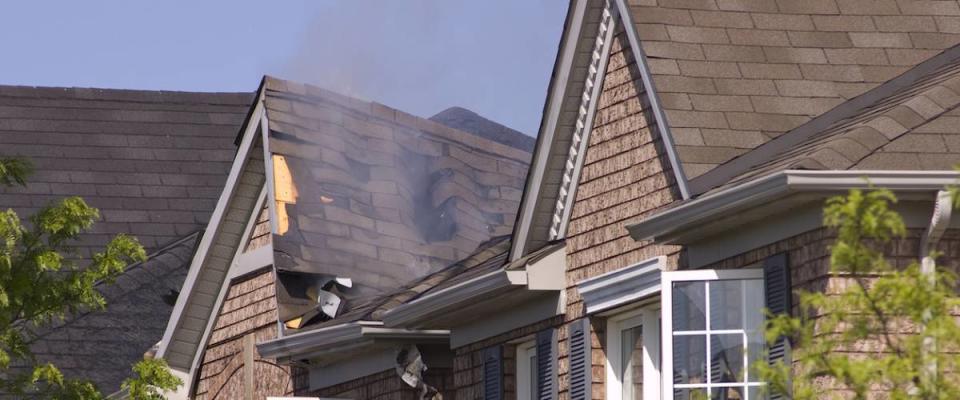
If you walk into a room that smells like a campfire, and yet there’s no fireplace to be seen, that’s a huge red flag.
For ambitious investors looking for a fixer-upper, a cheap, fire-damaged home might be very tempting.
But keep in mind that smoke may have seeped into the wood beneath the drywall. If you walk into a room that smells like a campfire yet there’s no fireplace to be seen, that’s a huge red flag.
The entire room may need to be rebuilt in order to remove the smoke smell and ensure that the wood beneath the walls it is structurally sound.
Fire and smoke damage repairs cost anywhere from $3,149 - $26,303, according to HomeAdvisor.
17. Sinkholes
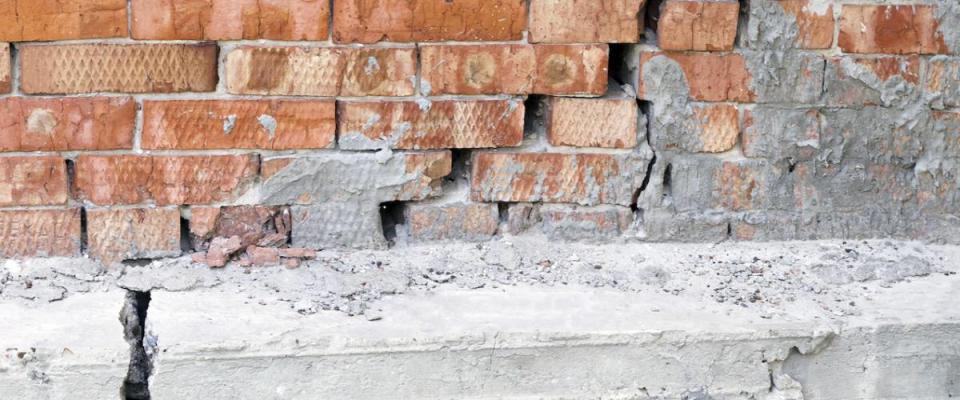
If left undetected, you could lose your entire house.
Sinkholes are watery pits that form in the ground in areas where the earth is made mostly of porous sand and limestone. Sinkholes are absolutely terrifying, because they have the potential to swallow up your entire house without warning.
This hazard is most common in Florida, Texas, Missouri, Pennsylvania, Alabama, Kentucky and Tennessee.
If you buy a house and later discover cracks suggesting it’s on top of a sinkhole, you can pay for a procedure called compaction grouting, in which concrete is injected into the void beneath your house.
This will cost anywhere from $200 to $9,000, but that doesn’t cover the cost of repairing cracks, driveways and more. If a potential sinkhole is left undetected, you could lose your entire house.
18. Outdated windows
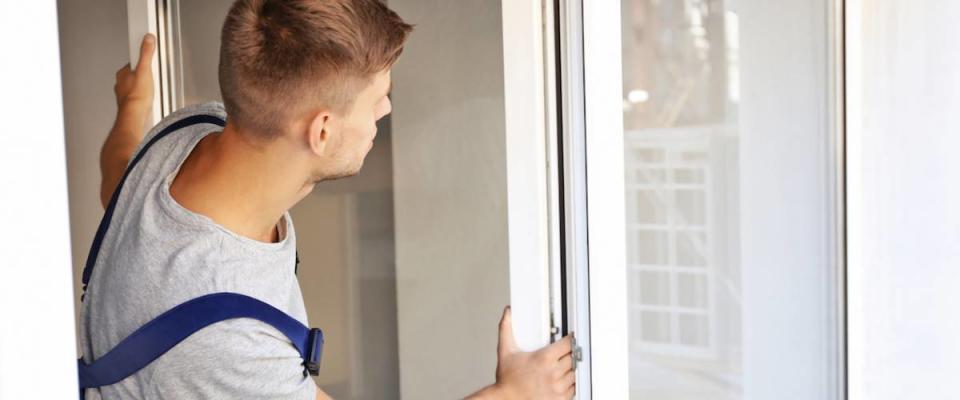
The average cost of one double-paned window is around $150.
If you are buying an older home built before the 1960s, the windows will most likely be made of single-pane glass: one thin sheet of glass, which makes it very easy for thieves to break in. It also causes a draft during the winter, which will increase the cost of your heat bill.
The average cost of one double-paned window is around $150. That might not seem too bad, until you multiply by the number of windows in the entire house.
If you live in a coastal state and really want to go the extra mile to feel safe, you can buy hurricane-resistant windows and doors. But they can be incredibly expensive: $500 for just one window and over $1,000 for a hurricane-proof door.
19. 'Attractive nuisances'

Something on your property that has the potential for neighborhood children to get hurt.
"Attractive nuisance" is a fancy term for something on a property that has the potential for neighborhood children to get hurt.
Swimming pools, playgrounds, machinery, stairs, wells and tunnels all qualify, and it is the property owner’s responsibility to make sure kids can't access any of that stuff.
If children get hurt on your property because of an "attractive nuisance,” you could find yourself responsible for their hospital bills. If a child dies, there is no price that will fix the guilt felt by both you and the parents.
Be hyper-vigilant about any potential dangers on your property. You may have to pay for a new fence, which can cost between $2,000 to $3,000, or buy a shed to hold garden machinery, and those cost $1,000 and up.
20. Terrible neighbors

The value of your home has a lot to do with the quality of your neighborhood.
The value of your home has a lot to do with the quality of your neighborhood. Unfortunately you may pay full price for a house, but if the next-door neighbors let their property fall apart, that decreases the value of your home, too.
Bad neighbors can reduce a home’s value by 5 to 10%, the National Association of Realtors says. And that can mean the loss of tens of thousands of dollars when you put your house on the market.
If you are unfamiliar with the area where you are house hunting, keep an eye out for broken-down cars, uncut grass, dogs tied to chains and a general lack of pride. And, do some research on crime and foreclosure rates.

 Yahoo Finance
Yahoo Finance 